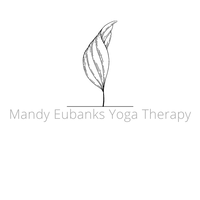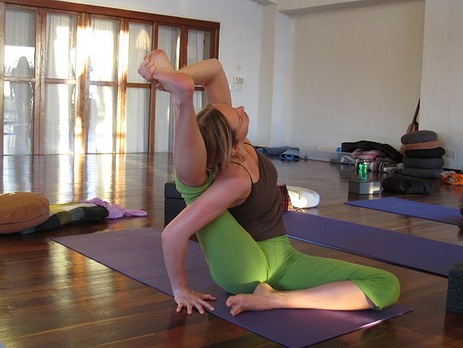 Themes: Autumnal Equinox, slowing down, finding balance, embracing change Sequence: Peak Pose- Compass pose
0 Comments
 I teach yoga, but really I facilitate movement. I practice yoga, but really that's only a portion of my movement diet. I eat really clean and consciously, so I can move freely. In our modern lifestyle, which is pretty darn amazing, we have little encouragement to move in a variety of ways. We actually don't move that much at all. AND if we get inspired to move the entry point into which we rediscover our love for movement becomes our obsession. There is so much compulsion around, let's say yoga. There is pressure to practice yoga every day and it even gets as restricted to practice one style or with one teacher. Then comes boredom, repetitive stress injuries or hyper- mobilization. I'm not even going to get into the spiritual shaming that then occurs. I'm going to say it, Yoga is Broken. And not because it's been westernized or because it's lost its spiritual roots. It's broken because it's rigid, exclusive, and doesn't embrace that we are beings designed to move a so many ways that it's impossible to systematize and package it into one perfect method. There is a whole universe of movement available to us at any given moment. The best time I've ever had in a yoga practice was when I'm playing yoga with my friends. Trying out different yoga poses without the supervision of a teacher. Left to our own intuition there was inversions, backbends, crawling, jumping, and maybe even hanging (brachiation) from some monkey bars at nearby playscape. It's in our nature to connect with others and particularly thru movement. Ido Portal, movement genius, talks about how it would be more natural for us to connect as human beings thru movement. Can you imagine, meeting someone new and before asking them what they did for a living, how many kids they had, or where they are doing on vacation if you had a fun and friendly wrestling match or played a game of chase or hide and seek. As a mother of a 18 month old I'm seeing movement patterns that we develop as human beings from an early age. Squatting, crawling, reaching, sprinting, climbing. and resting the body in a very efficient way (Laying down on our back). I'm inspired by her. In fact I mimic her. Every afternoon I lay down on my back and rest just like she does. And beyond movement I feel her joy and happiness by her unrestricted movement diet. I'm less concerned with her vocabulary development as I am her movement development. I let her climb onto the kitchen table, jump on the couch, run around like a wild women. And most of the time I take her lead and join her and because of it I'm happier and more connected. I continue my work as a yoga teacher in hopes that at the least I'm an entry point to the world of movement or I can offer a refreshing and different perspective for one that already practices. But my greatest joy would not be that a person regularly attends my class year after year but that they move on, literally, and try other methods, take dance, martial arts, play with their kids, and joyfully live their mobile life. Right now I'm enjoying Sridaiva Yoga, swinging on monkey bars, climbing up jungle gyms, and inverting as much as possible. What's your movement diet? Inspire me!  We hear the word "Flow" a lot in the yoga world. But what does it really mean? Moving from posture to posture gracefully with the breathe is one way I hear it described. But that doesn't quite hit the nail on the head as far as the experience of being in the "Flow" goes. The feeling that nothing else in the world matters except for what's happening in the present moment is far beyond our physical experience. Positive psychologist, Mihaly Csikszentmihalyi, talks about in his book "Flow" the three elements that have to be present in order to experience "Flow". 1. There has to be a goal 2. There has to be feedback 3. There has to be a balance of challenge and putting one's mad skills to use Now let's just call him MC from here on out. MC actually observed and researched rock climbers to come up with the three Flow elements which is considered by him and his follower's "the optimal human state". But we can easily apply these to our yoga practice and see that's exactly what is happening when we are in a yogic state of bliss, we are in the flow. We come to a yoga class with an intention (goal), we are constantly receiving feedback from our body, nervous system and environment, and we love to be challenged but not to the point of frustration. When this is all happening then we say, damn, that was a good practice. Can't wait to do it again. Next time you step on your mat, remember these three elements. Be clear, at why you're on your mat. It's okay to have a goal in yoga. Really, it's okay. We need to have a destination, especially in a home practice, or we will lose focus and interest and completely miss out on the opportunity to be in our FLOW. The feedback loop of your body, nervous system, and environment is all there for you. All you have to do have is pay attention. That information will set you up to self-regulate which is what MC is talking about when he says there's has to be a challenge to skill ratio. AND to be able to self-regulate in your yoga practice is the most satisfying experience offered in the Hatha Yoga practice, in my opinion. To know and trust one's self so completely and embody that on the mat, no matter what class, teacher, or style is pure enjoyment of the SELF. So do this: 1. set your intention 2. pay attention 3. Self -regulate Final thought: Find a teacher who is not the boss of you but holds space for you. I know that "holding space" can seem obscure but you'll know it when it's being done. |
Bringing more consciousness to your mat and life.ArchivesCategories
All
|



 RSS Feed
RSS Feed
